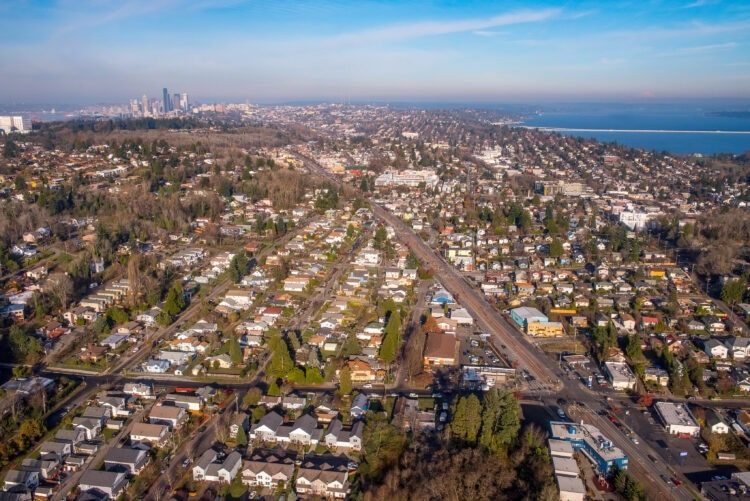Reviewed by Mila PereraOct 25 2022
For the past five decades, there has been considerable improvement in air quality due in part to the Clean Air Act. However, people of color at every income level in the United States are still vulnerable to greater-than-average levels of air pollution.

A team led by researchers at the University of Washington compared three potential strategies for reducing fine particulate matter pollution disparities across the contiguous U.S. Image Credit: Shutterstock
A research group headed by scientists at the University of Washington wanted to understand if the Clean Air Act has the potential to decrease such differences or if a new method would be required.
The team compared two methods that mirror the primary aspects of the Clean Air Act and a third method that is not frequently used to see if it would be better at remedying disparities throughout the U.S.
The scientists utilized national emissions data to model every strategy, targeting particular emission sources throughout the U.S. This required regions to adhere to particular concentration standards or decrease emissions in certain communities.
Since the first two approaches — depending on the Clean Air Act — did not overcome such differences, the community-specific approach helped remove disparities caused by pollution and reduced pollution exposure on the whole.
The team reported these findings in the Proceedings of the National Academy of Sciences journal on October 24th, 2022.
In earlier research, we wanted to know which pollution sources were responsible for these disparities, but we found that nearly all sources lead to unequal exposures. So we thought, what’s it going to take? Here, we tried three approaches to see which would be the best for addressing these disparities.
Julian Marshall, Study Senior Author and Professor, Civil and Environmental Engineering, University of Washington
Marshall added, “The two approaches that mirror aspects of the Clean Air Act were pretty weak at addressing disparities. The third approach, targeting emissions in specific locations, is not commonly done, but is something overburdened communities have been asking for years.”
Fine particulate matter pollution, or PM2.5, measures around 2.5 μm in diameter, around 3% of the diameter of human hair. PM2.5 comes from vehicle exhausts, fertilizer, and other agricultural emissions; electricity generation from fossil fuels; forest fires; and burning of fuels like oil, diesel, wood, coal, and gasoline.
These tiny particles can result in strokes, lung cancer, heart attacks, and other diseases and are thought to be accountable for around 90,000 annual deaths in the United States.
The scientists tested three possible strategies using a tool known as InMAP, which Marshall and other co-authors developed. InMAP helps model the chemistry and physics of PM2.5, such as how it is formed in the air, how it dissipates, and how wind patterns shift it from one location to another.
The crew modeled these advances with national emissions data obtained from 2014 since it was the newest data set available during this study.
The scientists looked at how effectively and efficiently every method decreased average pollution exposure for all people and how well it reduced the discrepancies for people of color.
These methods could not fulfill pollution disparities, but the concentration standards and emission source approach successfully reduced complete exposure throughout the country.
Our optimization models what happens if we maximize the reductions in disparities. If an approach cannot address disparities even when optimized to do so, then any real-world implementation of the approach will also not address disparities.
Yuzhou Wang, Study Lead Author and Doctoral Student, Civil and Environmental Engineering, University of Washington
Wang added, “But we saw that even with less than 1% of emission reductions targeting specific locations, the pollution disparities that have persisted for decades were reduced to zero.”
The researchers stated that bringing this location-specific method into practice would need extra work to determine which locations would be the best to target and work with the communities there to find how to decrease emissions.
Current regulations have improved average air pollution levels, but they have not addressed structural inequalities and often have ignored the voices and lived experiences of people in overburdened communities, including their requests to focus greater attention on sources impacting their communities.
Julian Marshall, Study Senior Author and Professor, Civil and Environmental Engineering, University of Washington
Marshall added, “These findings reflect historical experiences. Because of redlining and other racist urban planning from many decades ago, many pollution sources are more likely to be located in Black and brown communities. If we wish to address current inequalities, we need an approach that reflects and acknowledges this historical context.”
The additional co-authors of the study are Joshua Apte and Cesunica Ivey, both at the University of California, Berkeley; Jason Hill at the University of Minnesota; Regan Patterson at the University of California, Los Angeles; Allen Robinson at Carnegie Mellon University; and Christopher Tessum at the University of Illinois Urbana-Champaign.
This study was financially supported by the U.S. Environmental Protection Agency.
Journal Reference
Wang, Y., et al. (2022) Location-specific strategies for eliminating U.S. national racial-ethnic PM2.5 exposure inequality. Proceedings of the National Academy of Sciences. doi.org/10.1073/pnas.2205548119.